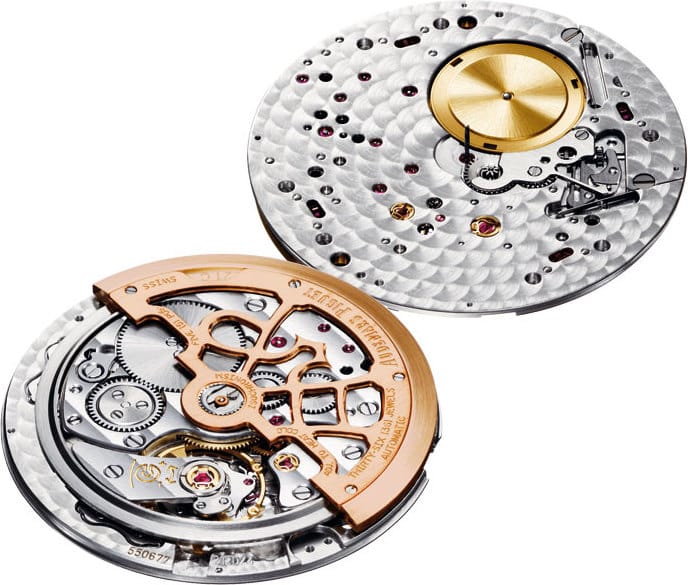Presented in 1972, the AP Royal Oak was met as a polarizing and very controversial watch for the time. Despite all the uncertainty of the industry regarding the design of the watch, it helped launch the trend towards luxury sports watches which became such an important part of the watch market.
At the time of writing this market, It’s been on the market for 50 years, but still, there are many things that are unknown to the average watch enthusiast. Here are some things you probably didn’t know, but are very interesting to know!
It was almost named “Safari”
Before the launch, inside Audemars Piguet company, the Royal Oak prototype was internally called “Safari” because of its sportiness and adventure-seeking spirit that resembles desert exploration, however, it didn’t stick to this name.
30 years later, the Royal Oak “Safari” was released
Even though the name Safari didn’t stick for the whole collection, an individual model was nicknamed Safari, super-sized version of the original Royal Oak Offshore Chronograph.

The bezel screws were inspired by vintage diving helmets
Gerald Genta took the inspiration for the bezel screws from a vintage scuba diving helmet. He thought to himself, If the screws holding the faceplate were strong enough to ensure a watertight seal on the helmet, surely they must be capable of doing the same for a watch.

Bezel screws of the Royal Oak are made of white gold
Because they are too small to be rhodium-plated, they can look yellow from certain angles, however, it’s white gold that goes through the case and holds the watch together. The screws are stainless steel on the Offshore models.
The prototypes were also white gold, solid white gold
Although it was manufactured in Stainless Steel for its whole history, it started in white gold. While it’s general knowledge that gold is more expensive than steel, however, it’s easier to work with, and at its debut at the 1972 Basel trade show, AP still didn’t perfect the crafting of the Stainless Steel cases and parts, and they went with the metal in which they were most skilled in, white gold.
Gerald Genta designed the prototype in one day
That’s right, even though the design is called timeless, it was drawn by young Gerald Genta in less than 24 hours. It probably would not been accepted from an anonymous watch stylist, but Gerald Genta already made his name in companies like Universal Genève and Omega.
It’s named after a Royal Oak tree
The origin of the name Royal Oak has two versions, and probably both of them are true. One of them is that the name comes from the tree whose branches King Charles II of England had hidden behind to escape the Roundheads following the Battle of Worcester in 1651.
The second version is that it’s named after eight British naval warships christened “Royal Oak.
AP Royal Oak started a new watch class
In 1972, sports watches were not luxurious. Back then, when watches were a necessity, not an accessory because cell phones and digital watches were decades away. Watches were meant to be practical and durable, to be able to withstand daily use and abuse.
The Royal Oak took the risk to become a luxurious watch with a superlative level of finishing, previously seen only in dress watches. The water resistance meant that it was designed to be used for a different type of activities, even jet skiing or any other adventurous hobby one can have.
It was expected to fail, and drag AP as a company to the bottom
Besides the risk Audemars Piguet took with the design and ideology of the watch at the time, it was launched in the quartz crisis era of the watchmaking industry. It had a price tag of $3,600, which was around 10 times more than a Rolex Submariner for example, and the first three years, AP only sold 1000 pieces.
The first customer was a royalty
As the name suggests, AP Royal Oak carries blue blood in its veins, no surprise the first customer was the Shah of Iran, a man known for his weakness towards cars and women.
White gold for the Shah of Iran
Even though the Royal Oak was manufactured only in stainless steel, the Shah of Iran was not ready to accept any Royal Oak. He wanted exclusivity, so Audemars Piguet obliged with a custom watch designed just for him, in white gold.
Its original nickname is “Jumbo”
Jumbo is a term used in the watch industry for watches made too big for their time, and even though now an Audemars Piguet Royal Oak might seem sleek, for 1972 it was bigger than the average watches on the market.
You can still buy the original Royal Oak “Jumbo.”
It’s rare that watch manufacturers will still offer a 50-year-old model. Not AP though. Walk into an Audemars Piguet boutique to find the modern 15202 watches. Occasionally, the original 5402 from ‘72 can be found at auction or by dealers.
Most are still made on 100-year-old machines.
Their unique dial “tapisserie” pattern that is found on the Royal Oak and Royal Oak Offshore are created by hours of dedicated labor that begins with a 100-year-old rose-engine, a pantograph-type machine, where a guide runs over an enlarged version of the dial and carves out a similar pattern on the actual dial. This process is called guilloche.
Even the high-tech Royal Oak Offshore Forged Carbon Diver, which features an uber-strong carbon fiber case, scratch-proof ceramic bezel, and titanium caseback, still relies on old-fashioned methods to achieve its trademark dial finish.
AP Royal Oak movement is the thinnest automatic movement in the world, until today
Presented in 1967, the caliber 2120 is just under 2.5 millimeters thick and was indeed the thinnest automatic movement the world had ever seen with a central rotor. Subsequently, other manufacturers did produce a thinner mechanism, however without the full-sized rotor to maintain power reserve. 2120 is considered the world’s finest mechanical watch ever produced!
